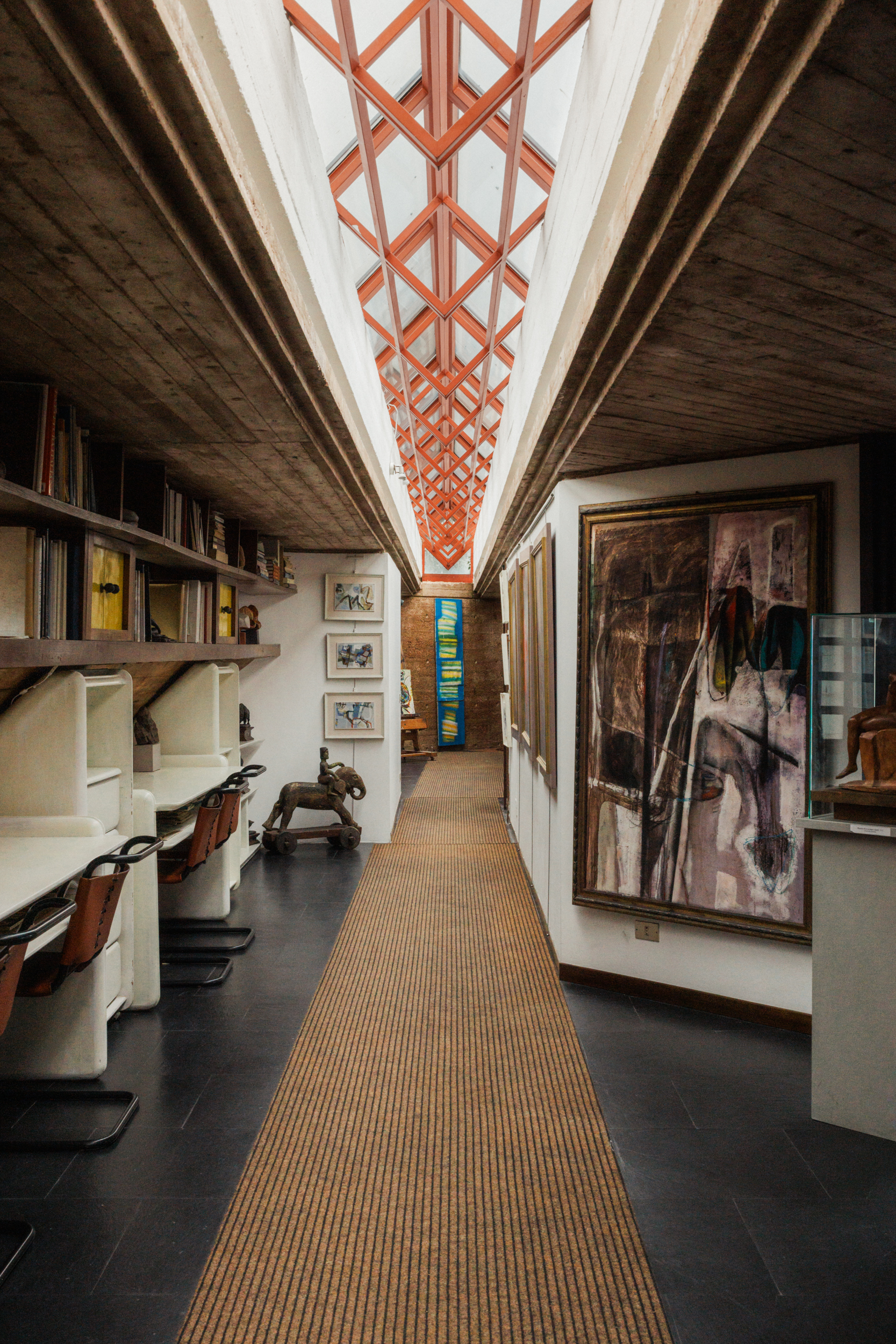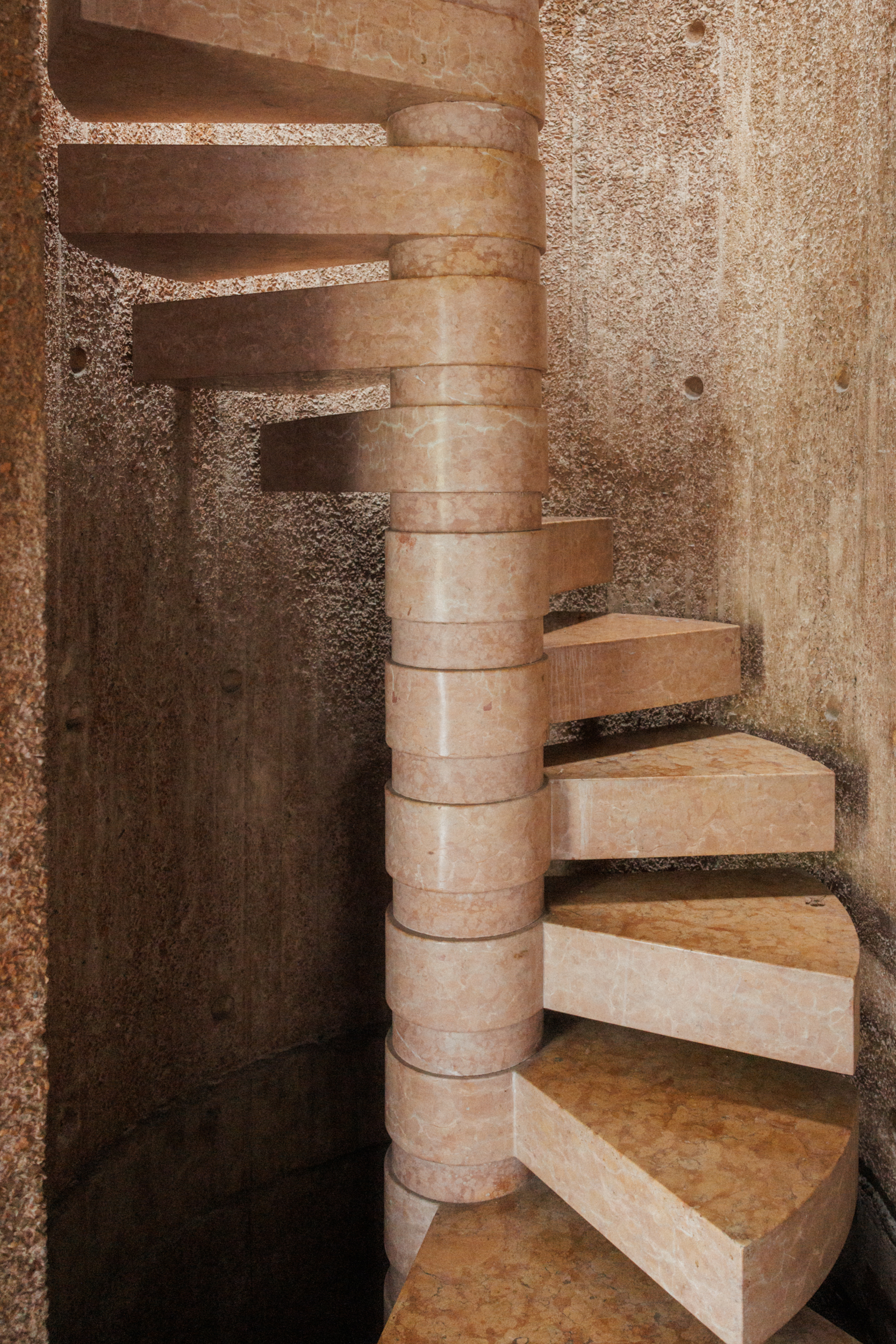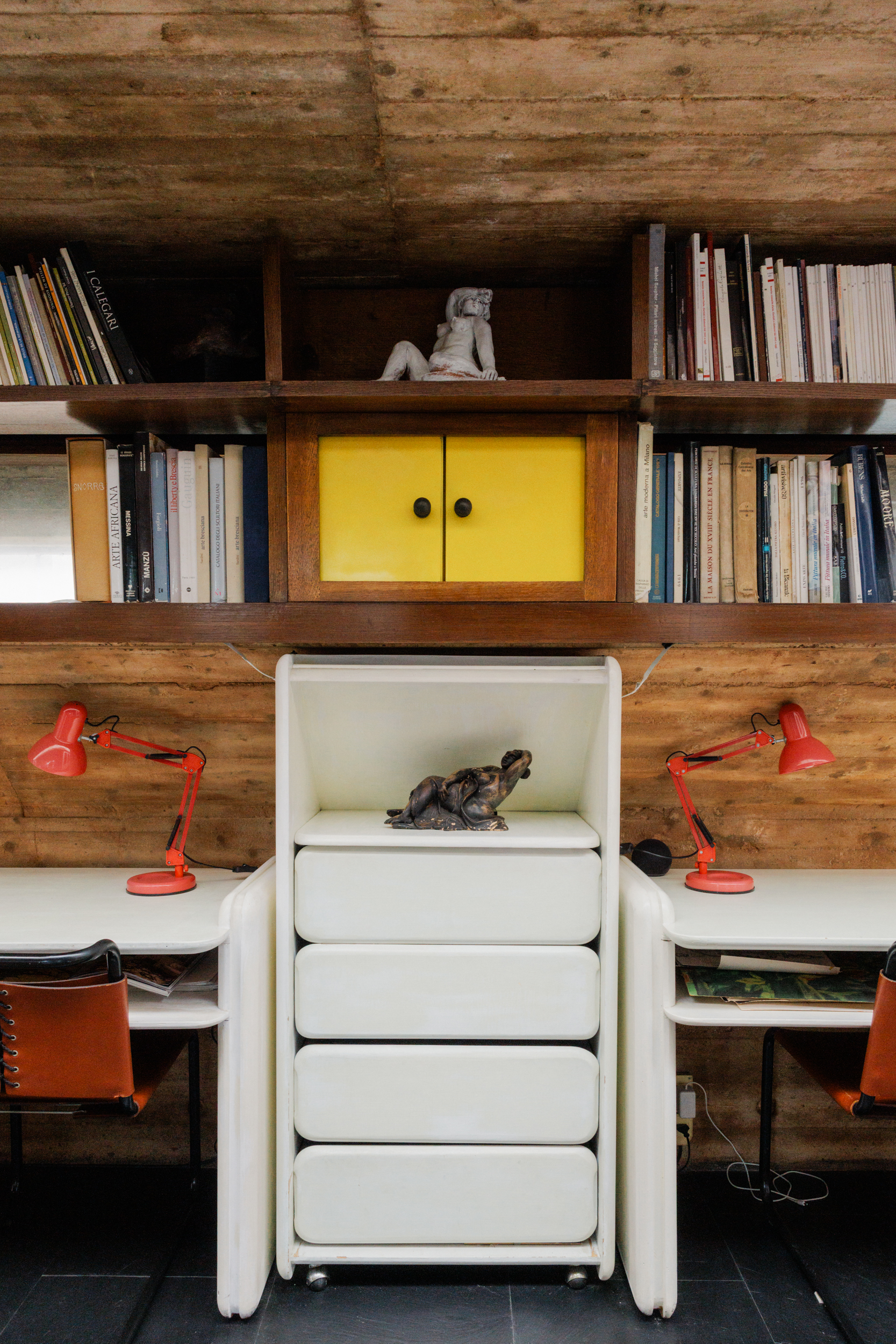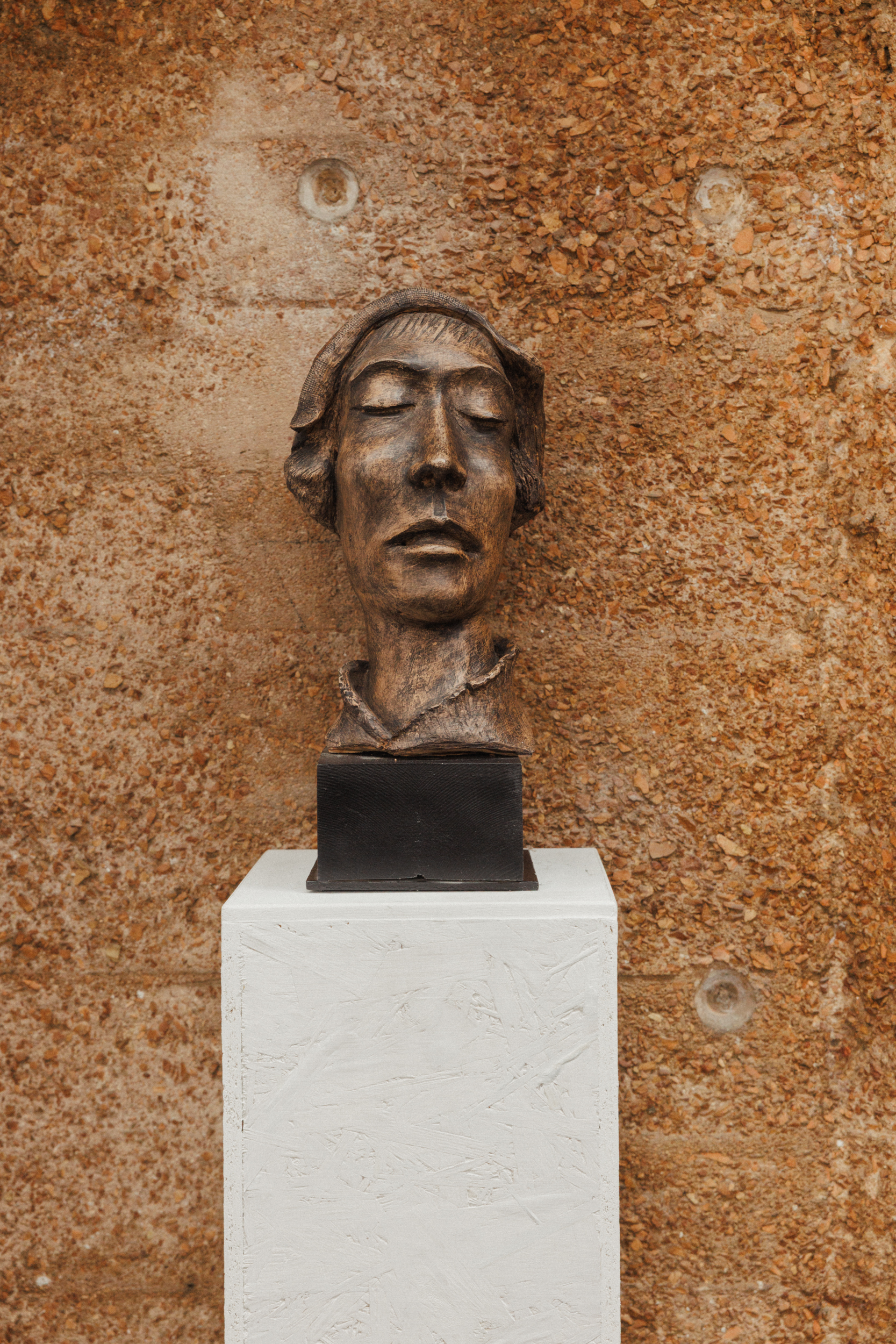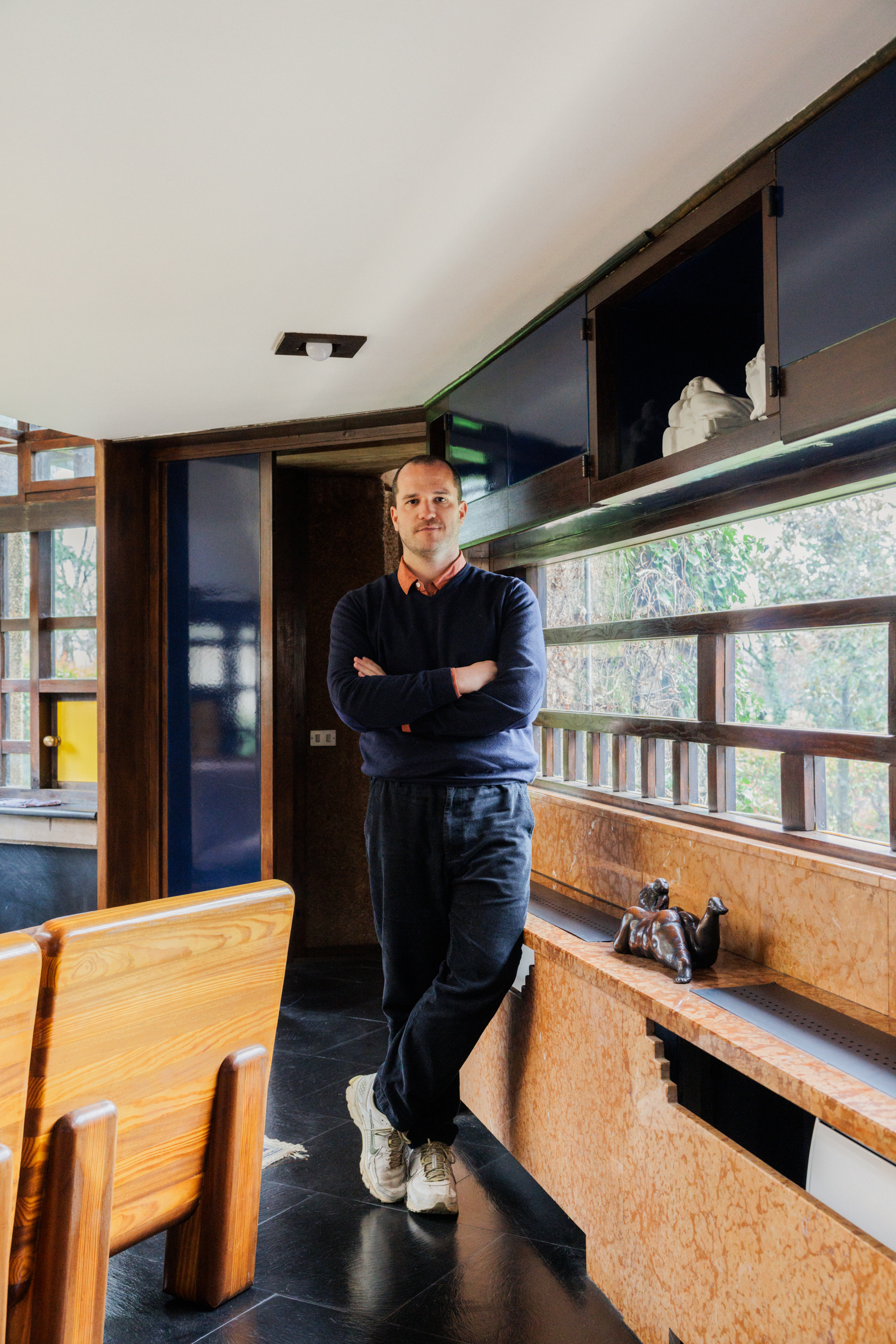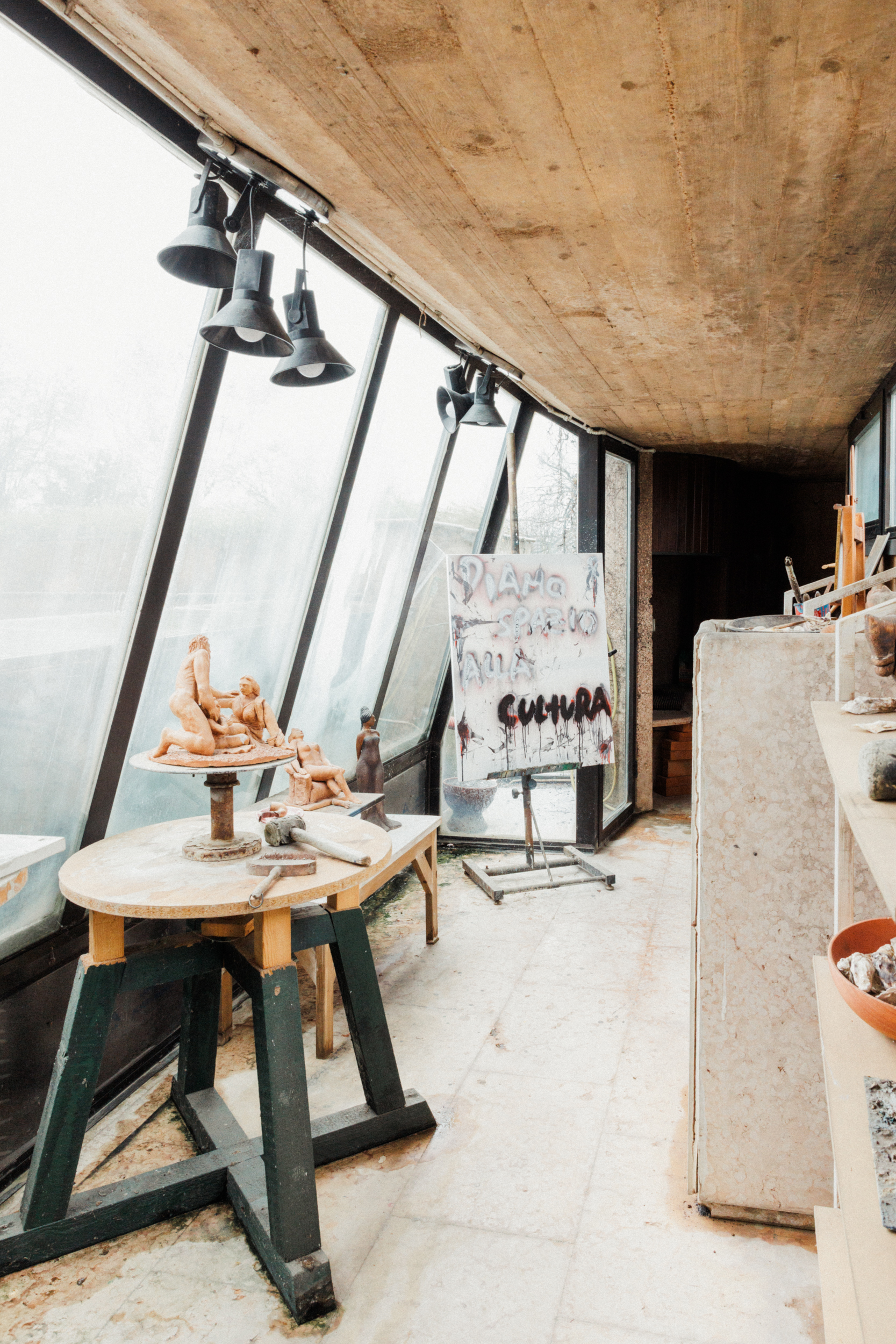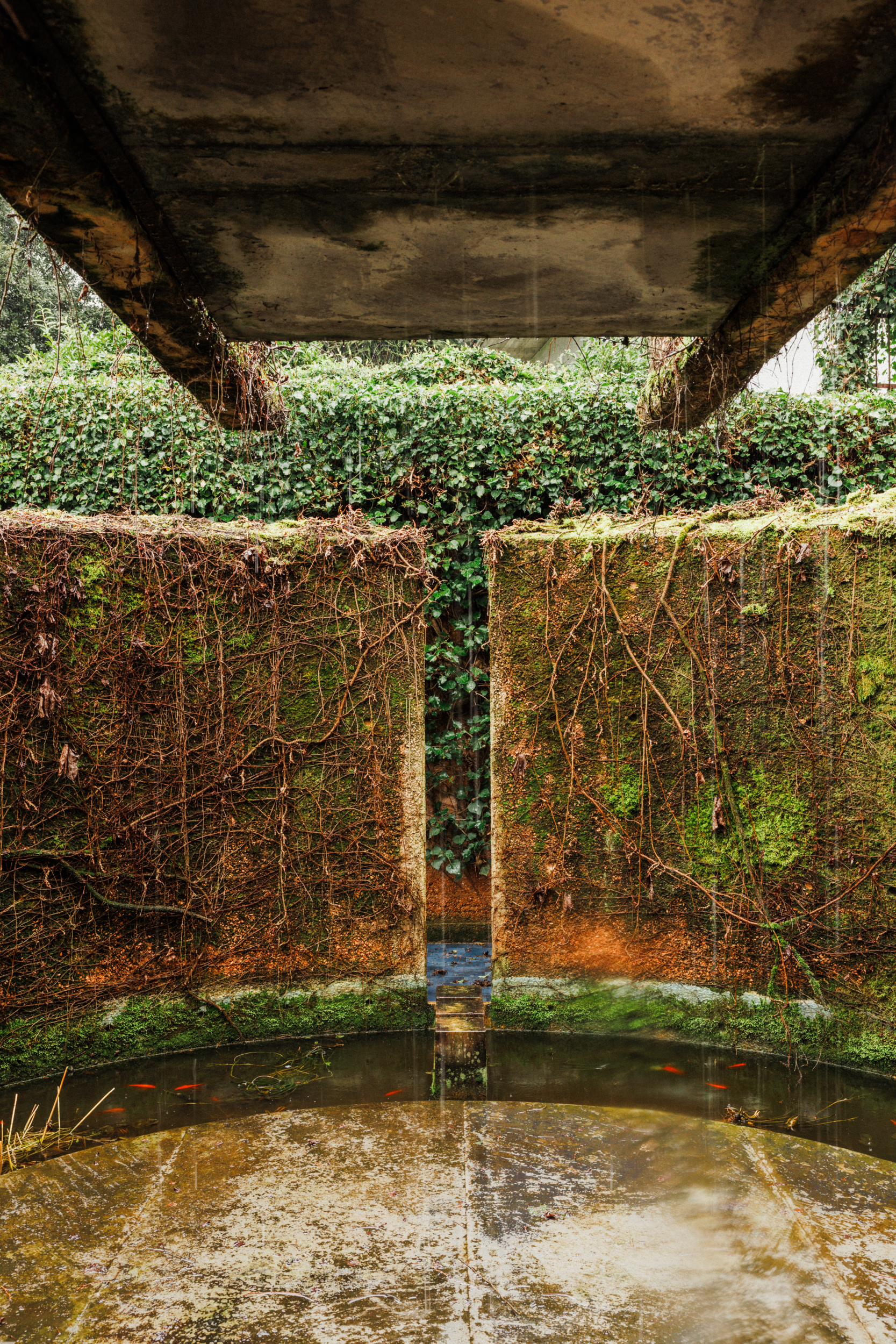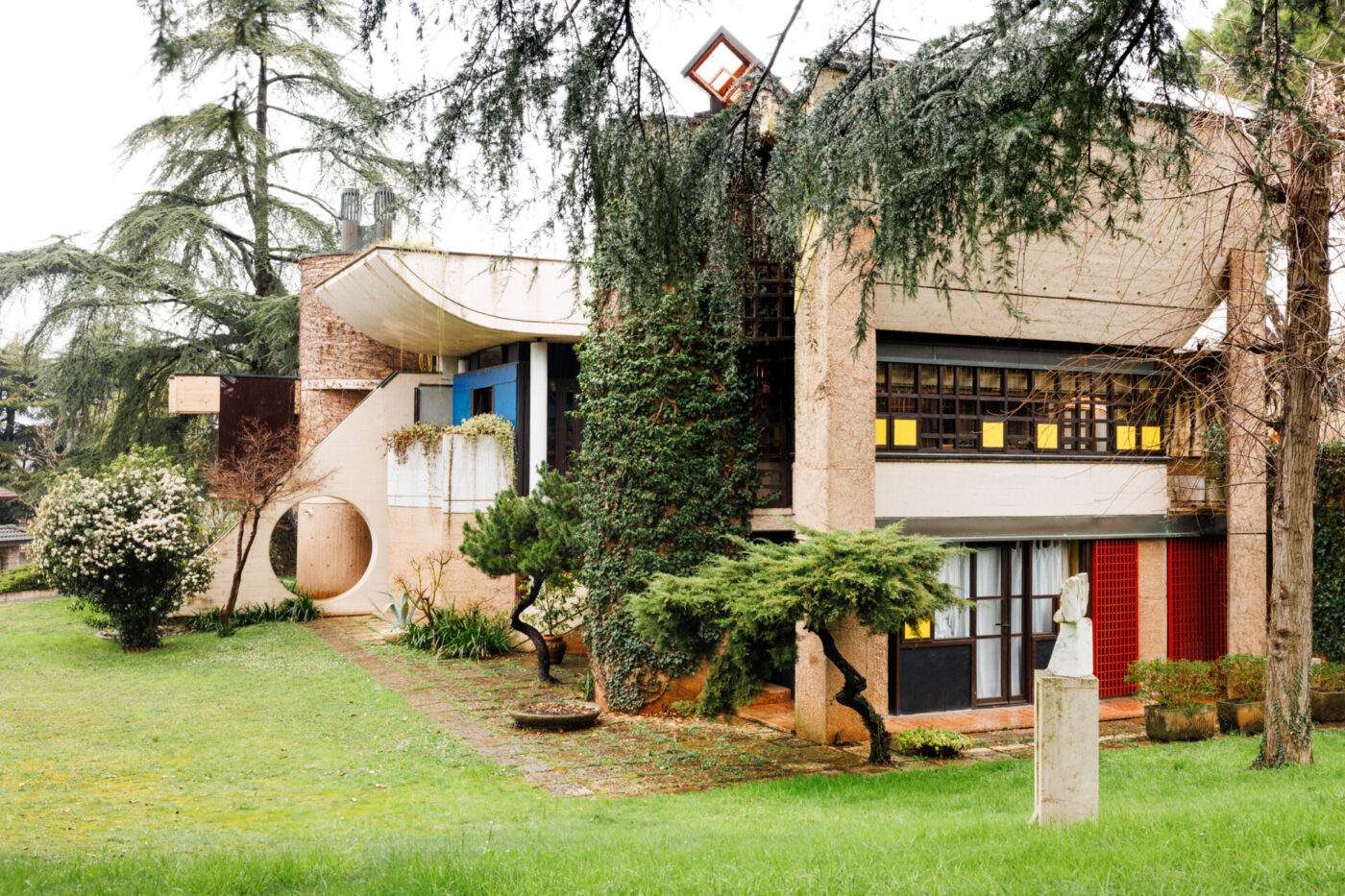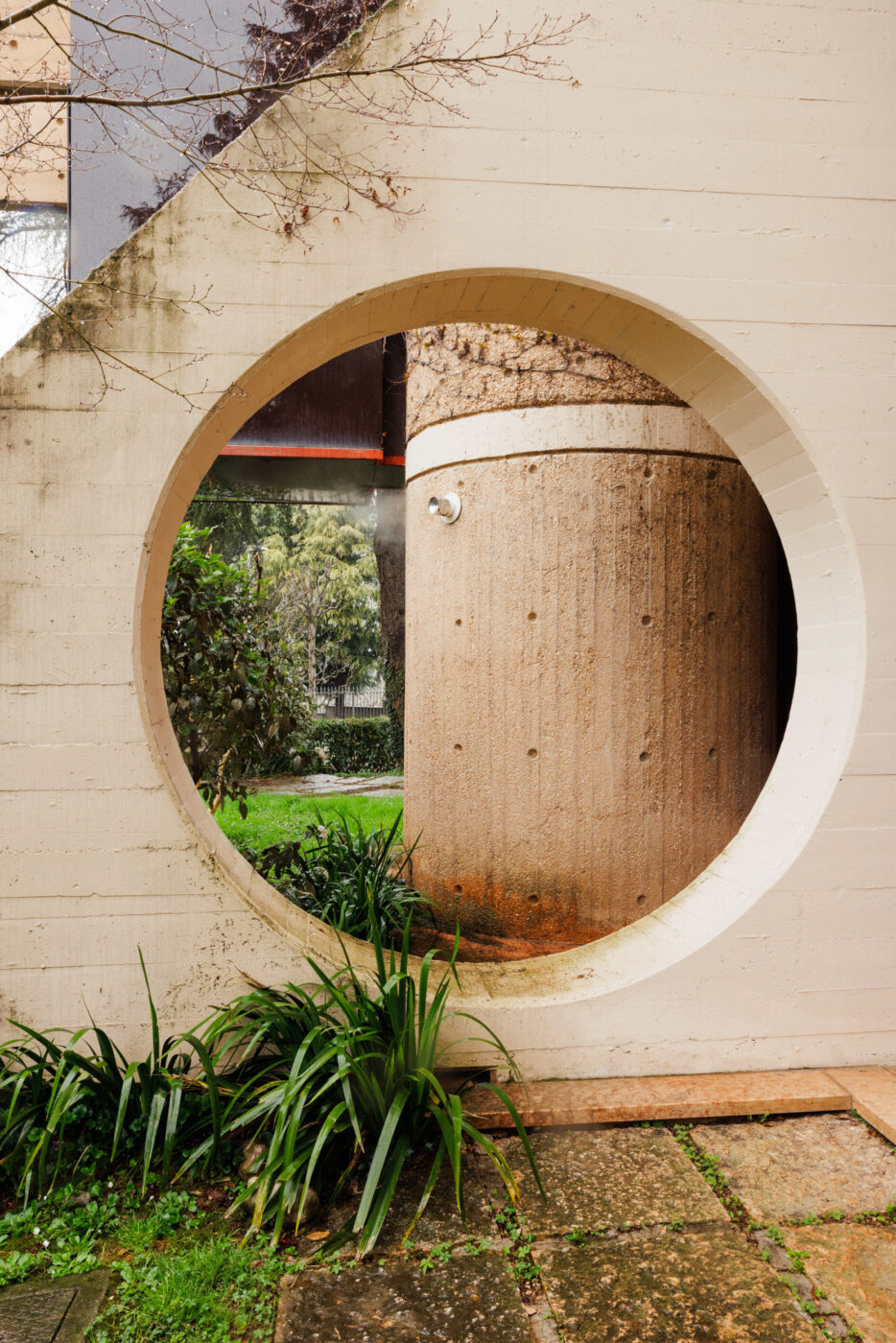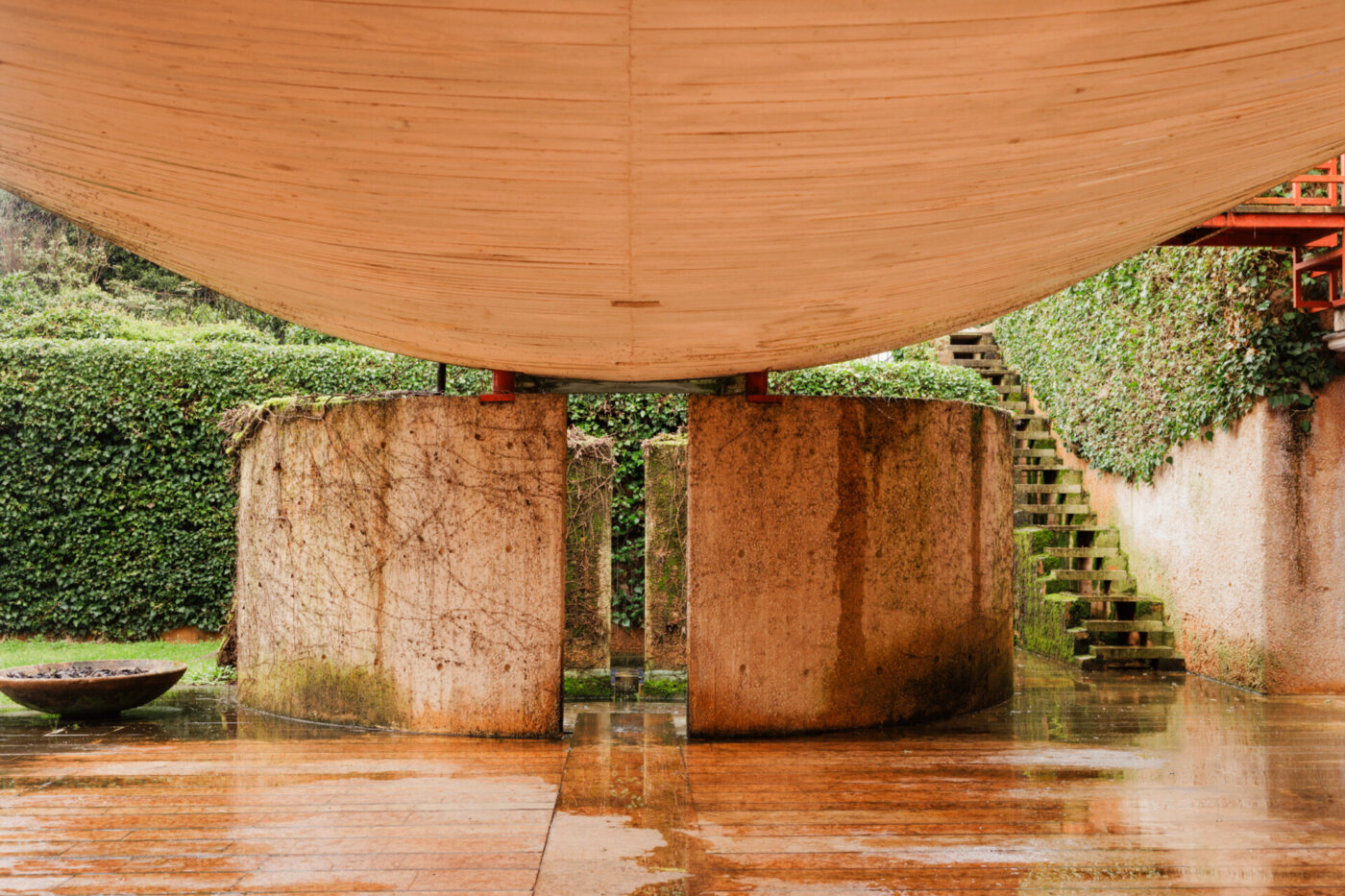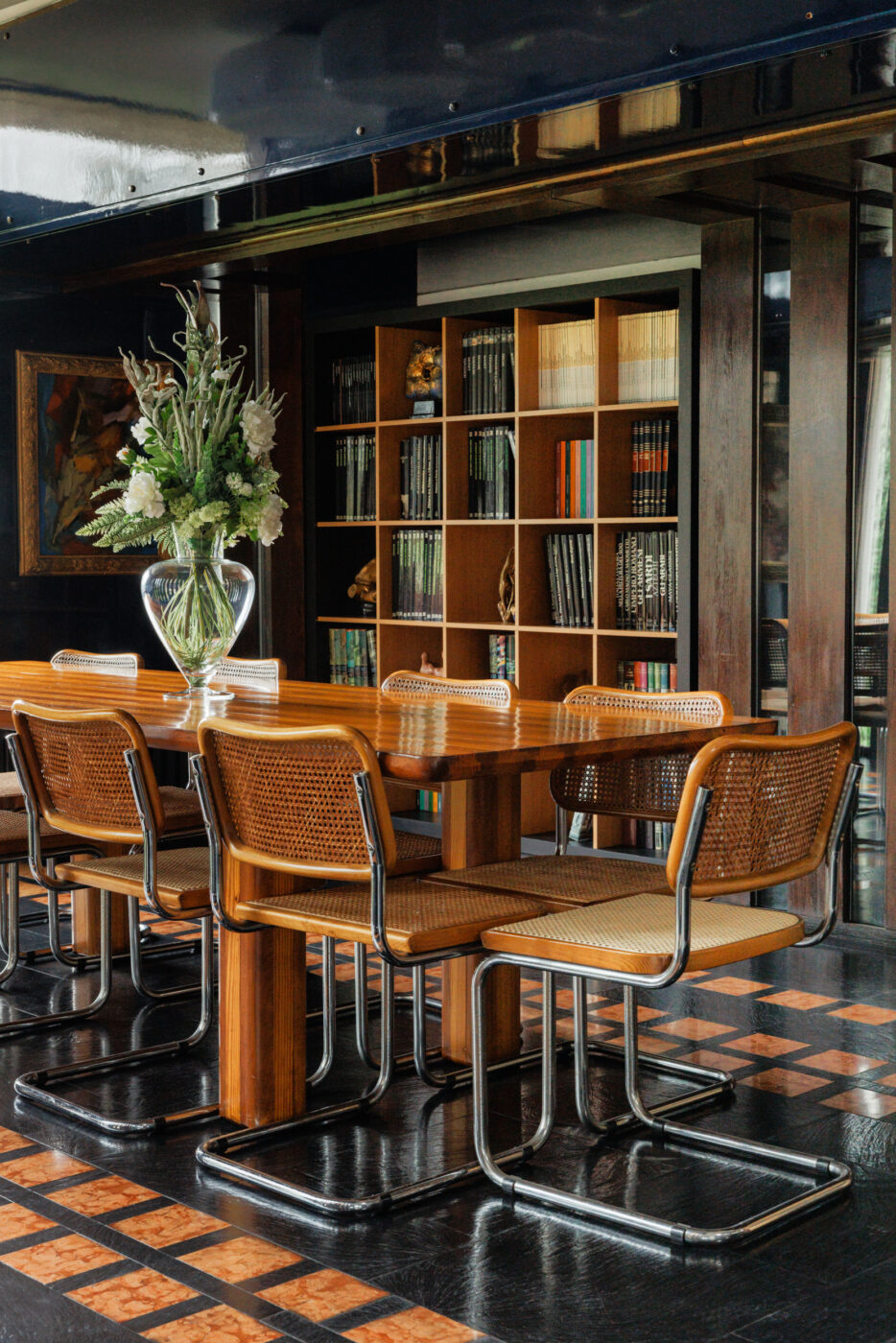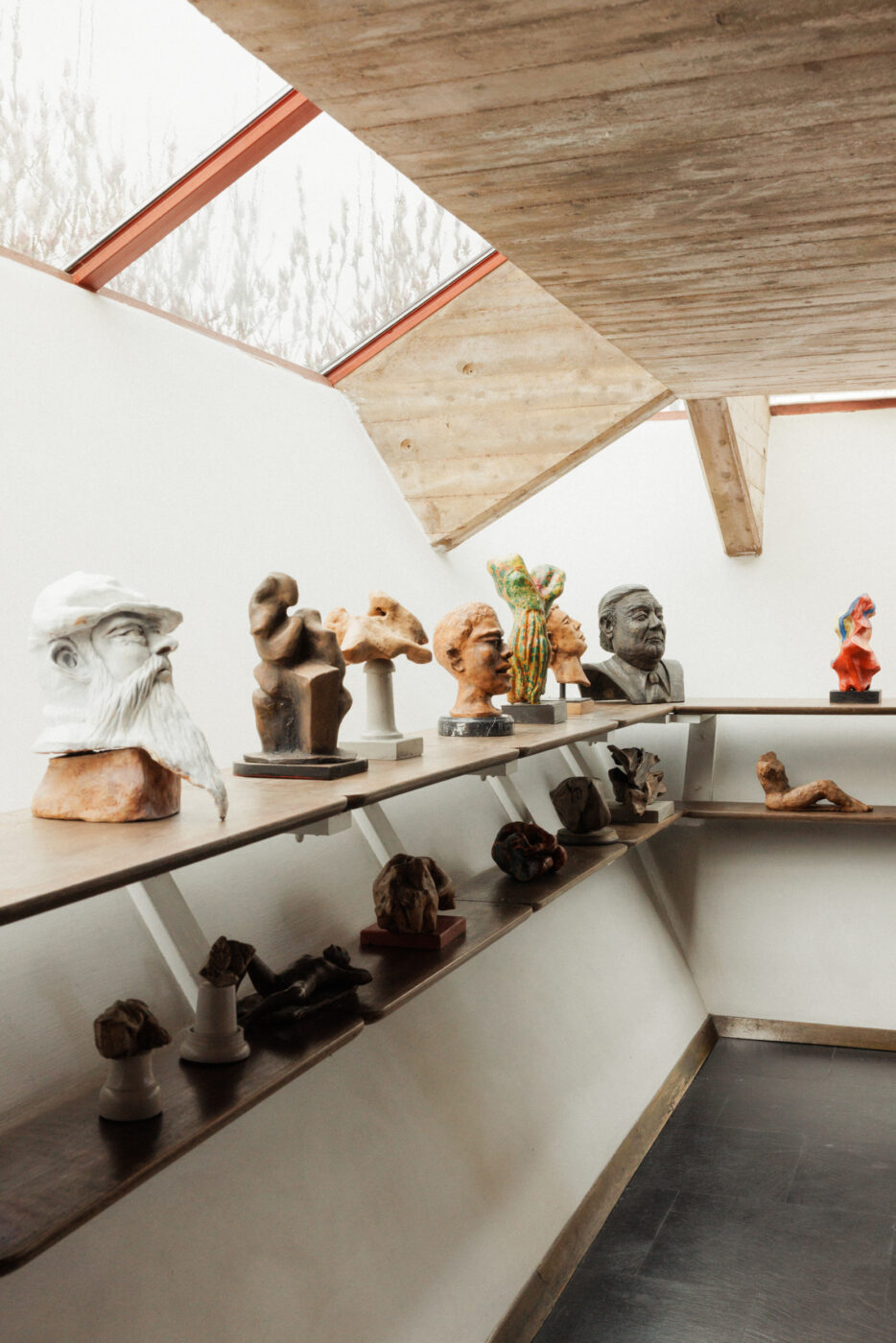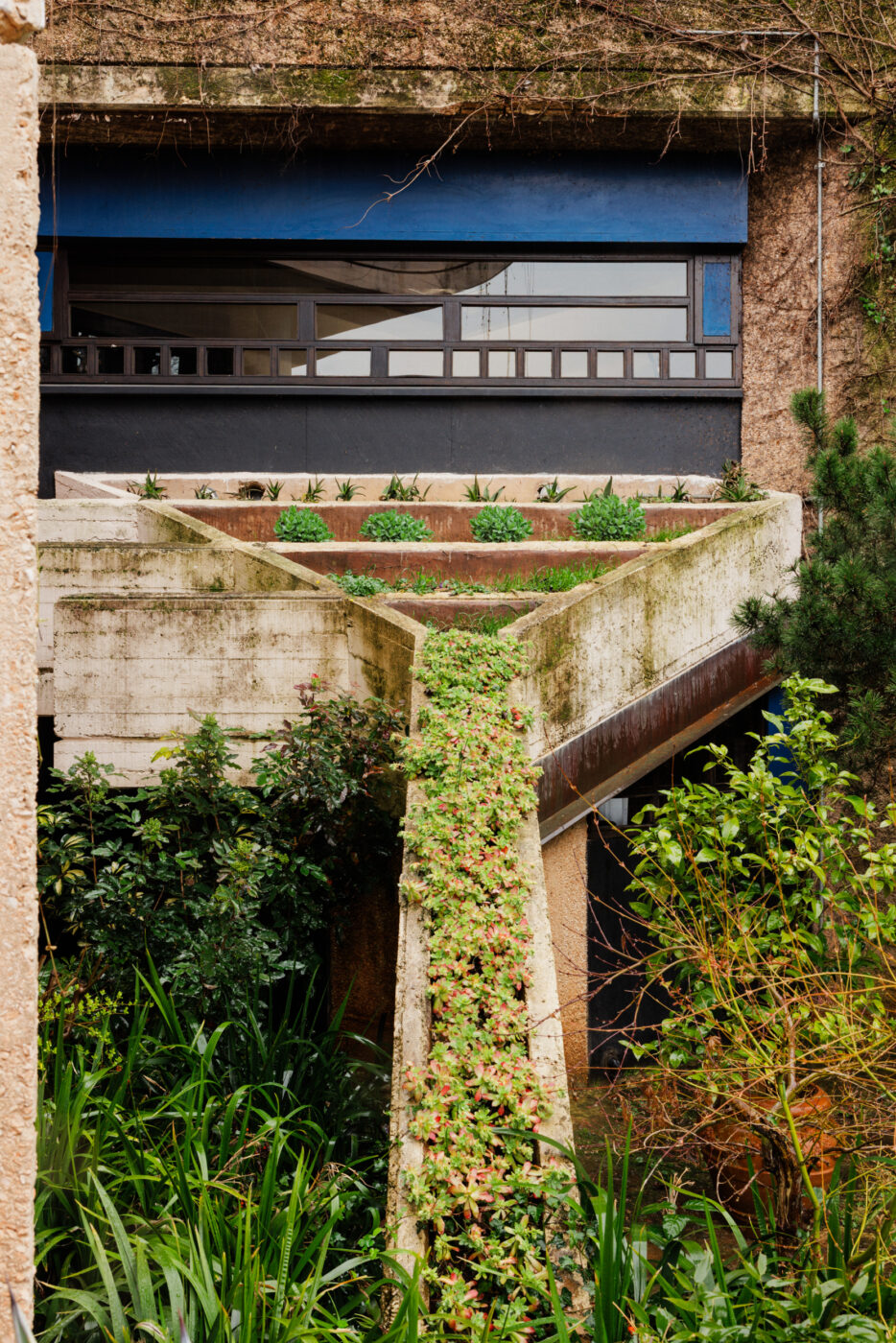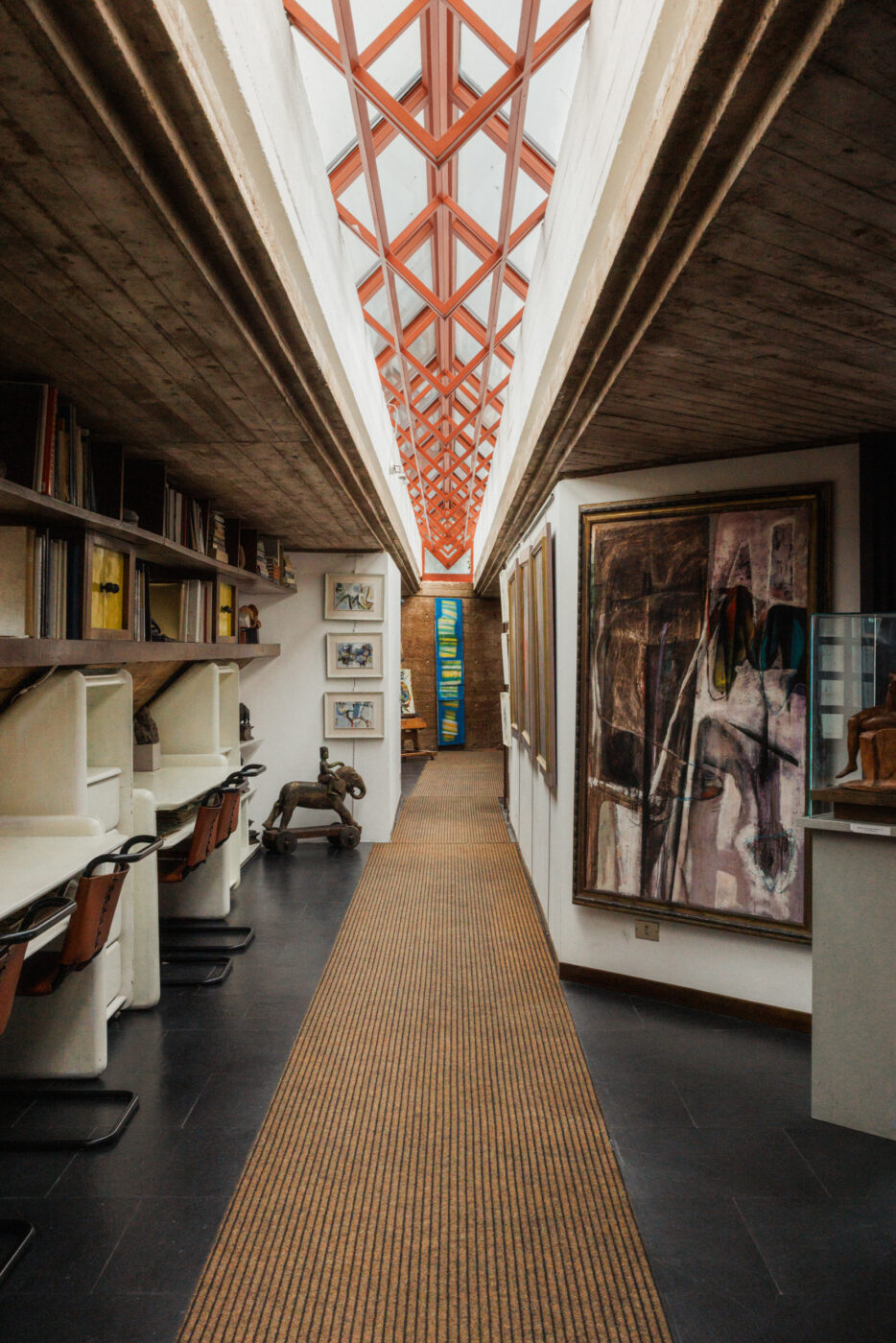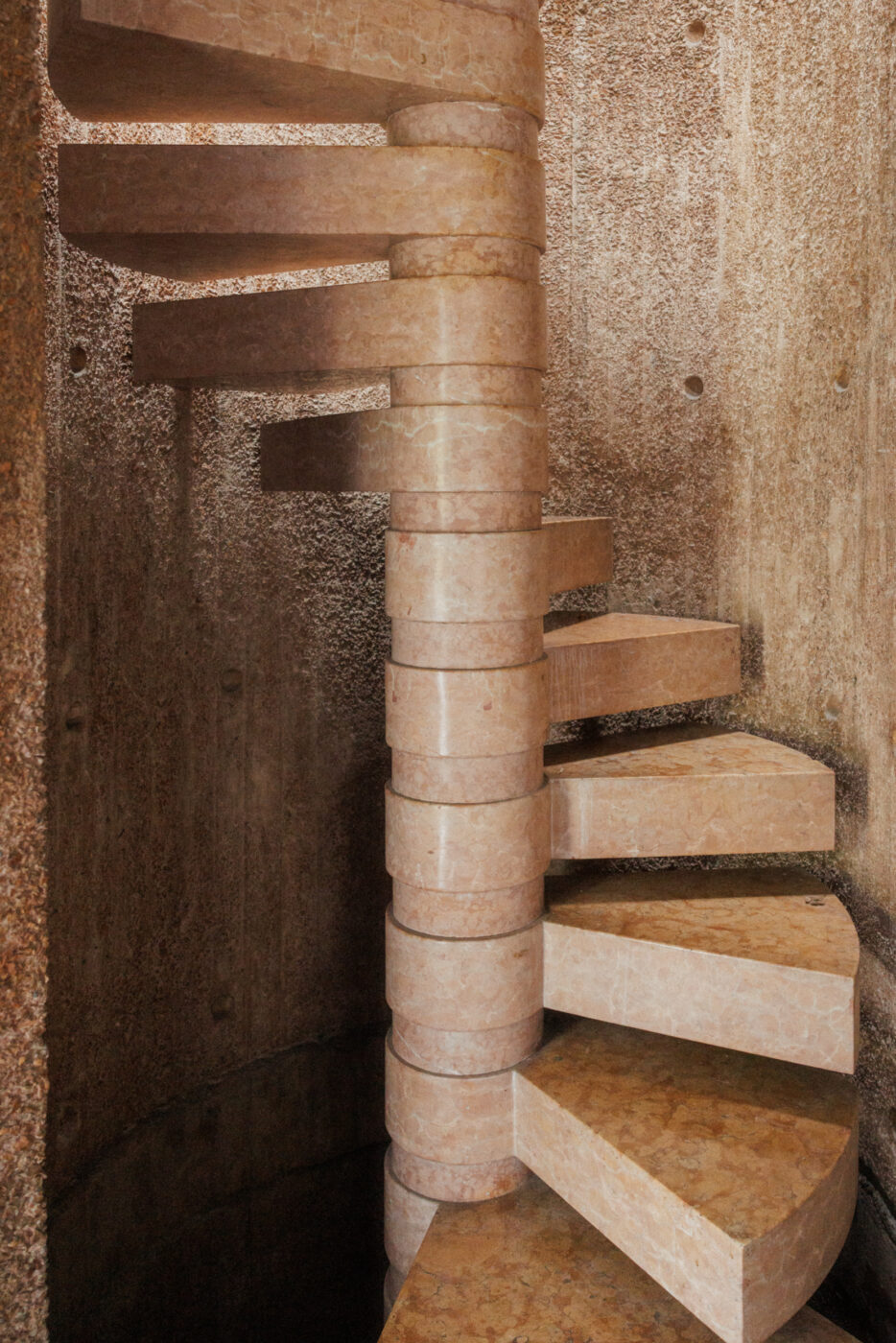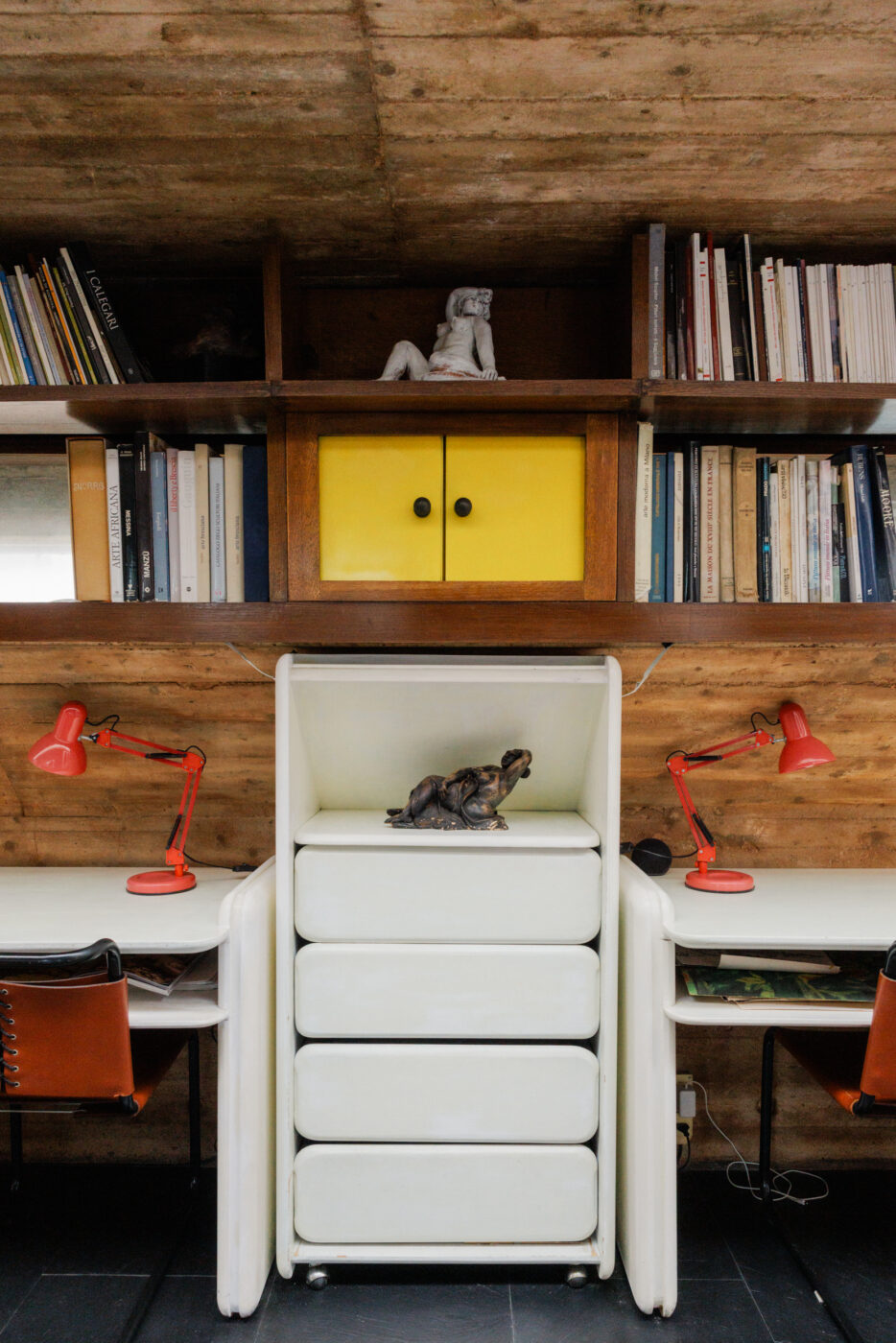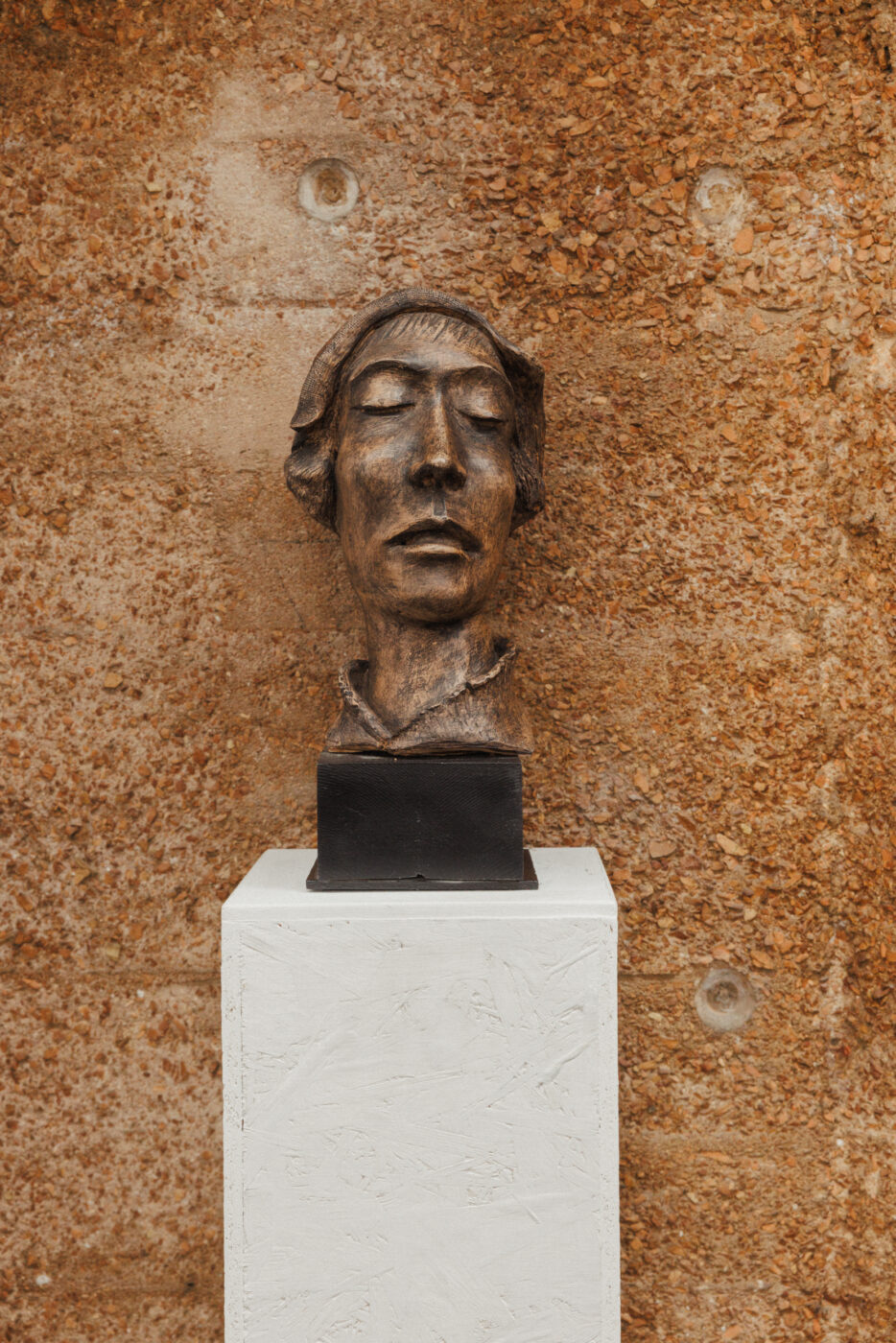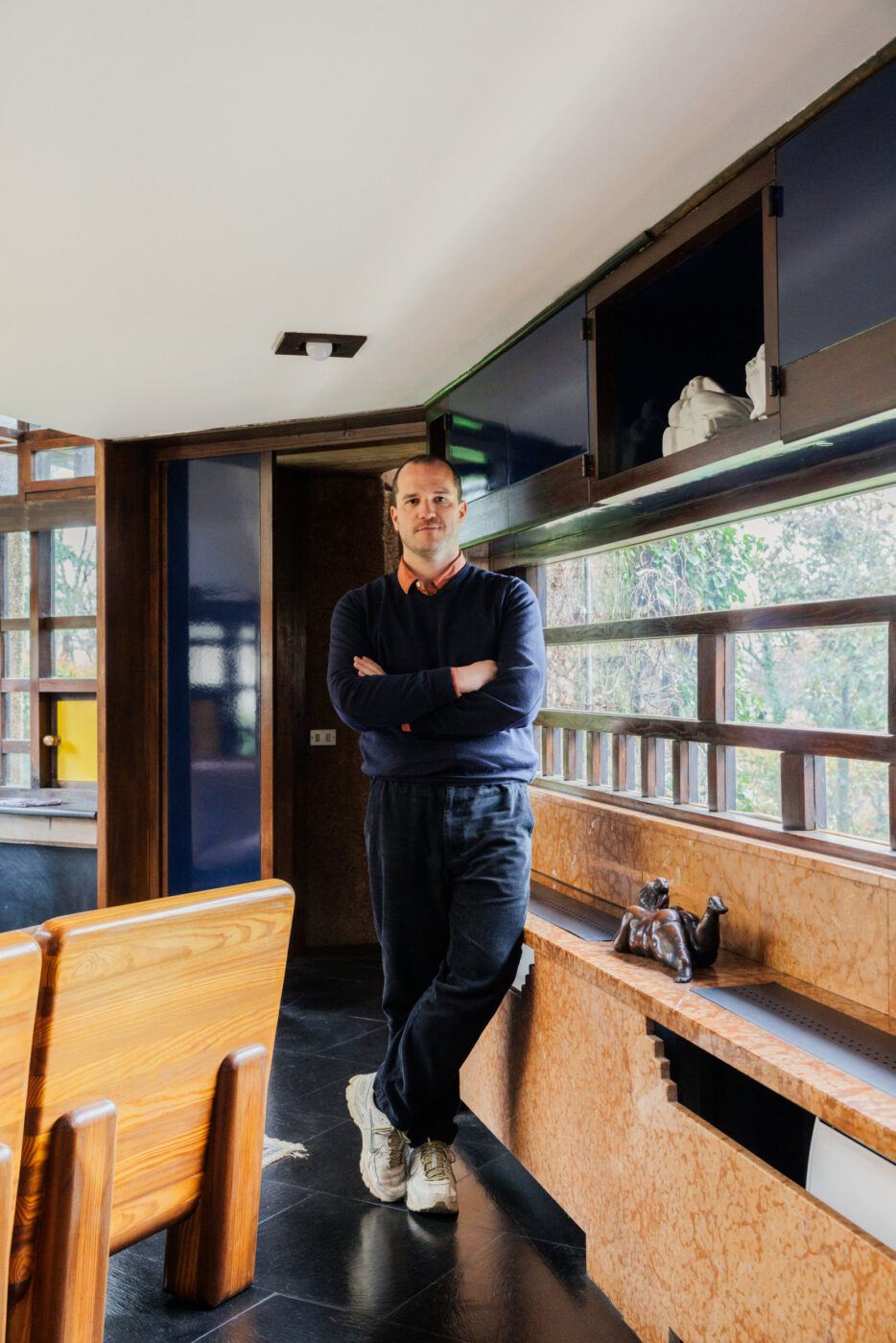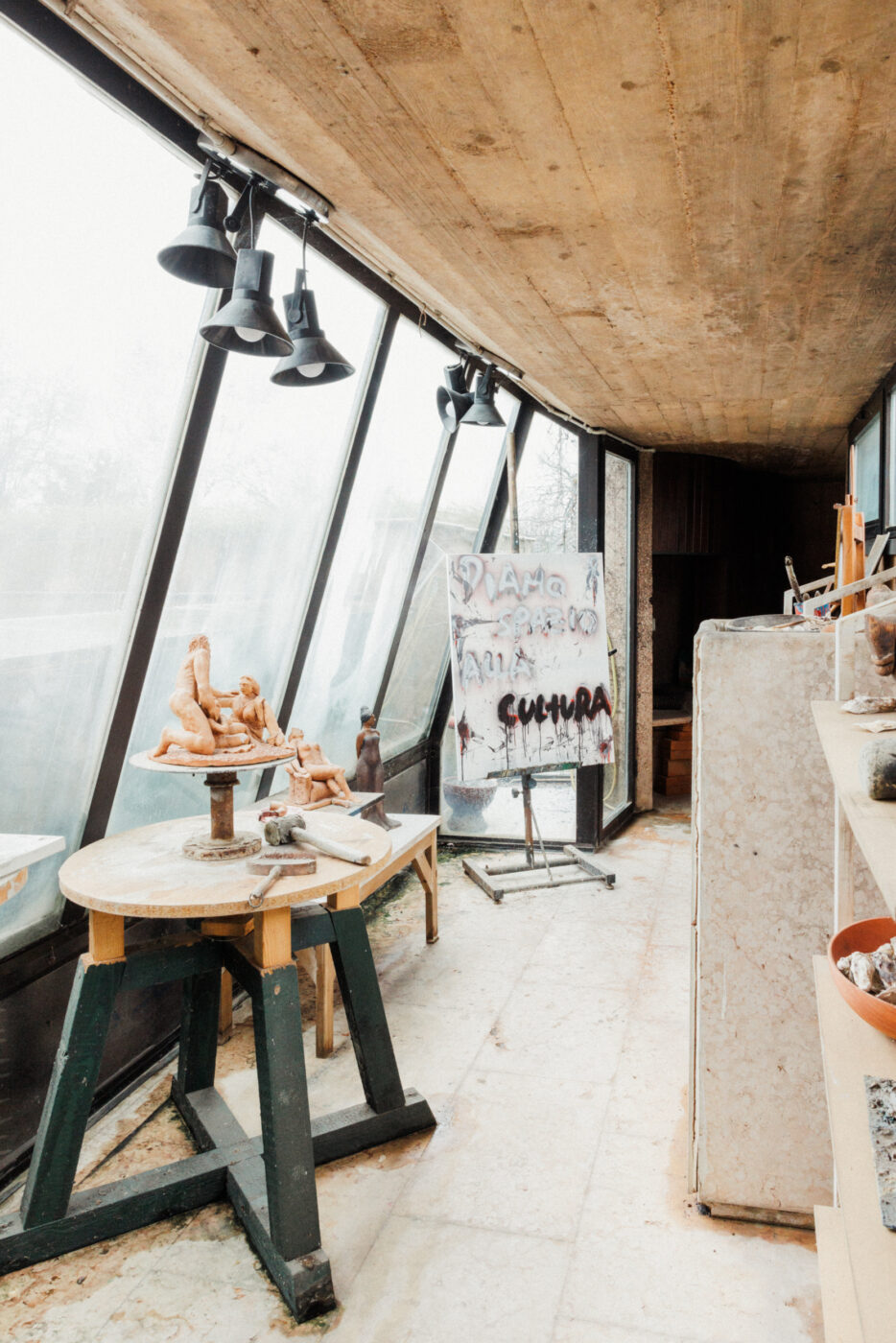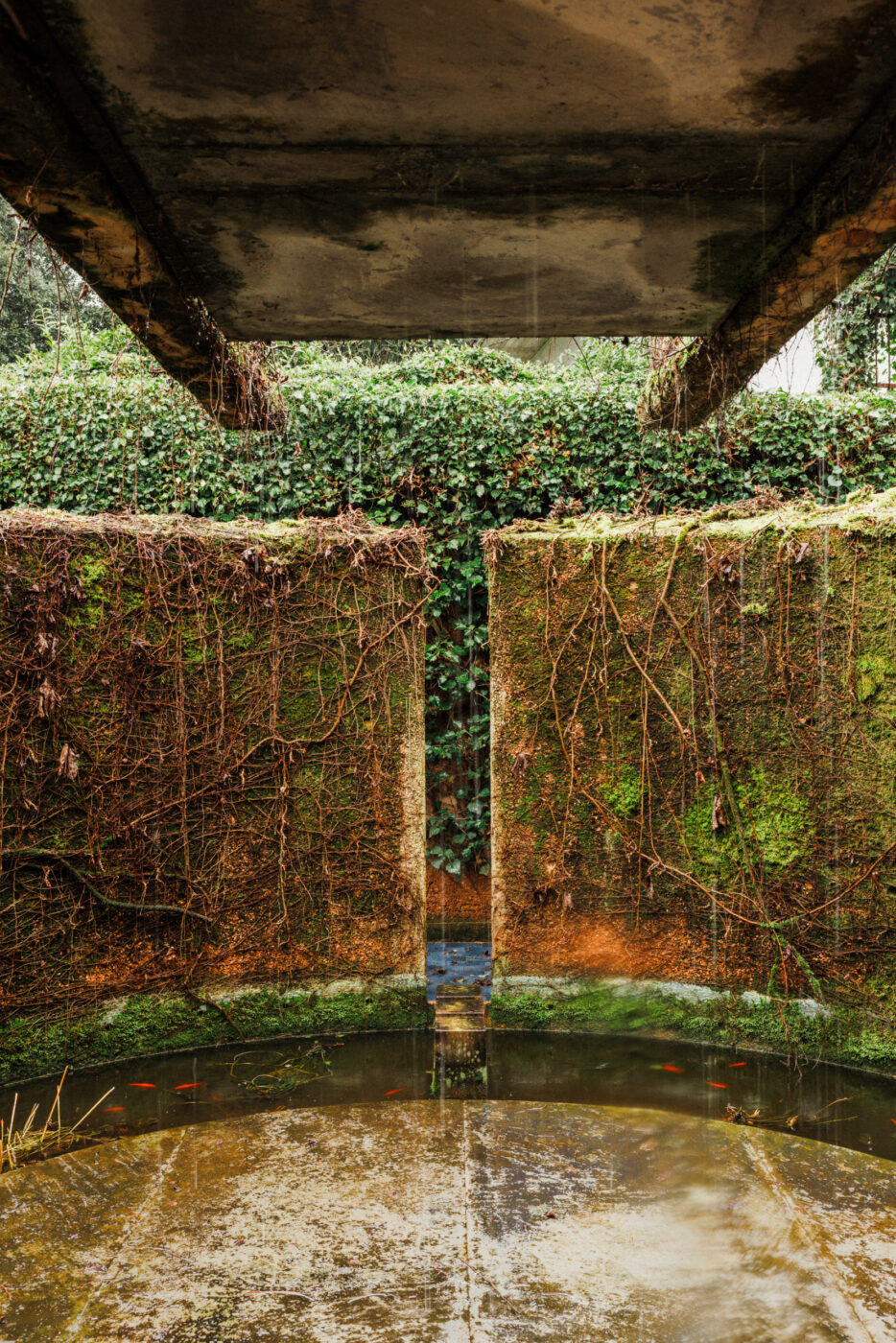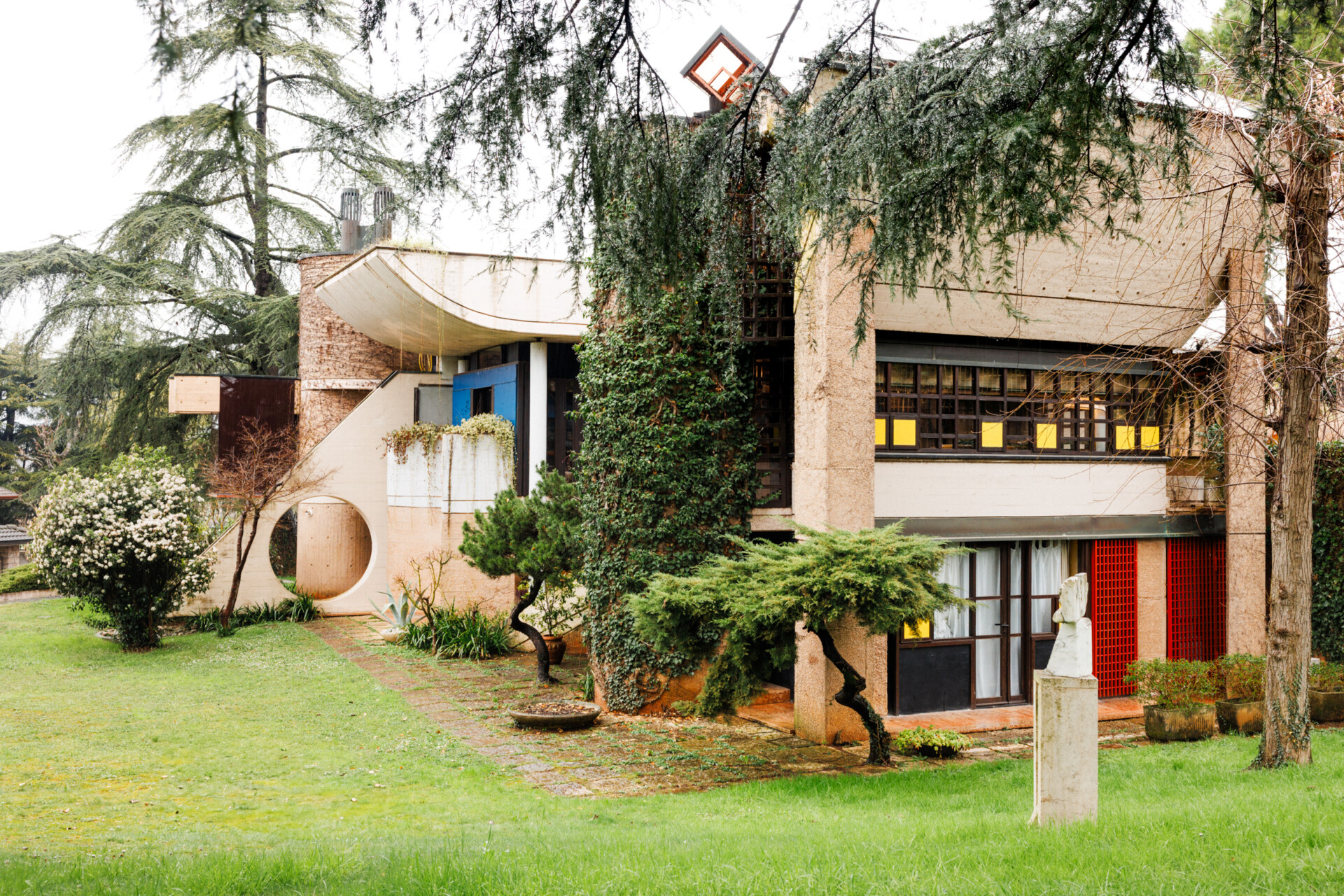
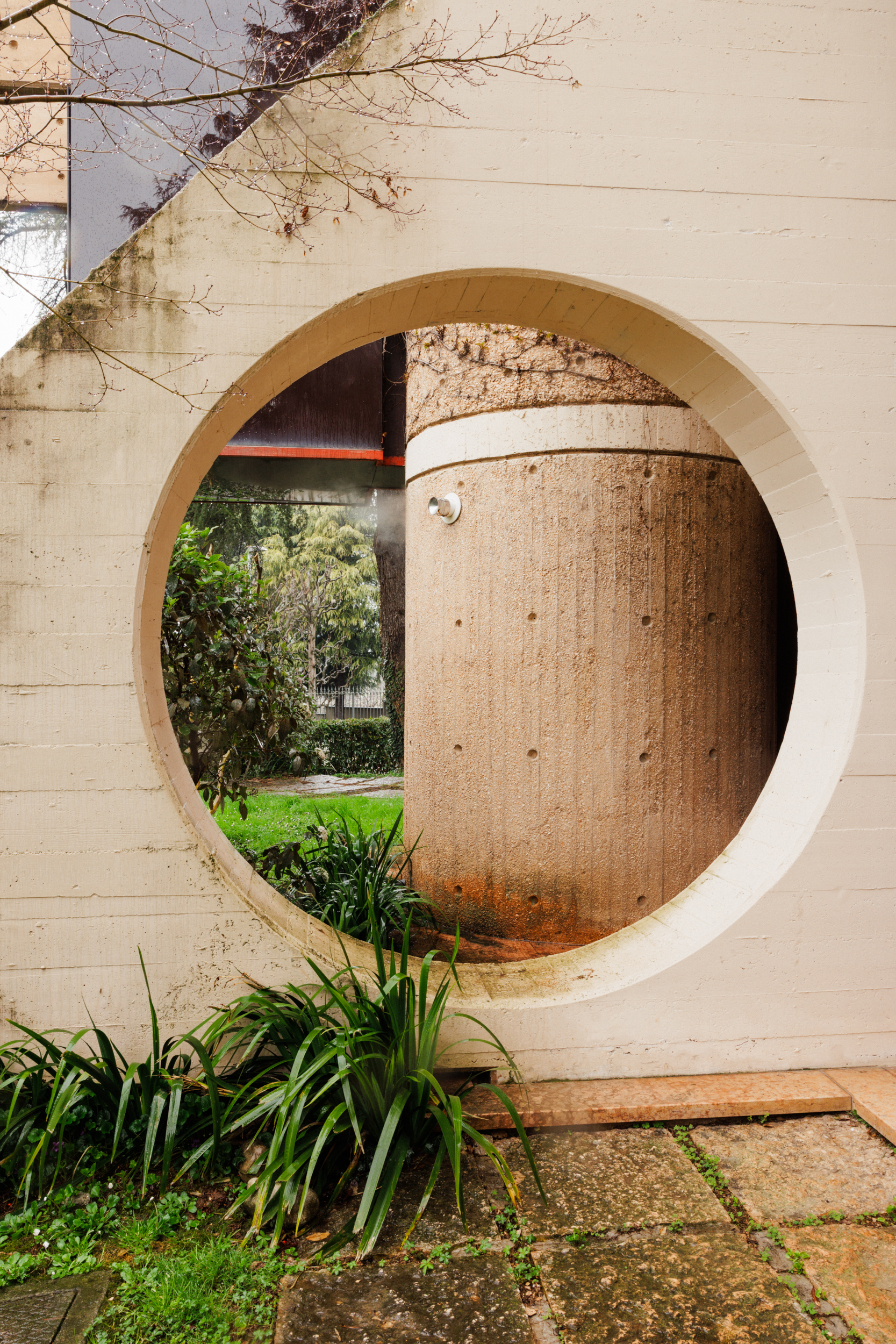
A particularly beguiling circle
I had never been particularly emotional about geometry until I visited Villa Caffetto. But that’s where I fell in love with a triangle, and a circle. Nestled in an unassuming street in Calcinato near Brescia, this house-museum (which is perhaps more accurately described as a museum-house) exists as a seemingly impossible arrangement of shapes, forms, and angles that converge in a kind of colossal Brutalist banquet. Its architectural rigor is complex; a testament to the radical experimentalism of modernist 1970s Italian design. At the same time, it sends your optics into a spin, inviting a symphony of “Ahhhh!’’ exclamations you can hardly contain. You feel a bit like Alice in Wonderland from the moment you enter Villa Caffetto, but instead of rabbit holes, endless spirals, and vanishing cats, there are hidden staircases, windows disguised as cupboards, and often, no telling where “inside” ends and “outside” begins. Shall we?
“Growing up here, it felt like living in a museum,” share Metilde and Giovanna Caffetto, daughters of the late artist and sculptor Claudio Caffetto (1942-2022), the villa’s original owner. They guide us through their childhood home, which started as a seed in their father’s imagination in his early 30s. Villa Caffetto not only remains in the Caffetto family today, but it’s entering its next chapter. New artistic director Stefano Soso is working closely with Caffetto’s daughters to transform it into one of Lombardy’s “must visit” cultural destinations.
“It might not have been the easiest environment to raise kids in, but we remember always having this endless sense of fascination about our home, especially all those secret spaces you could hide in,” says Giovanna.
“Even as adults, the house still has this timeless sense of discovery about it,” Metilde adds.
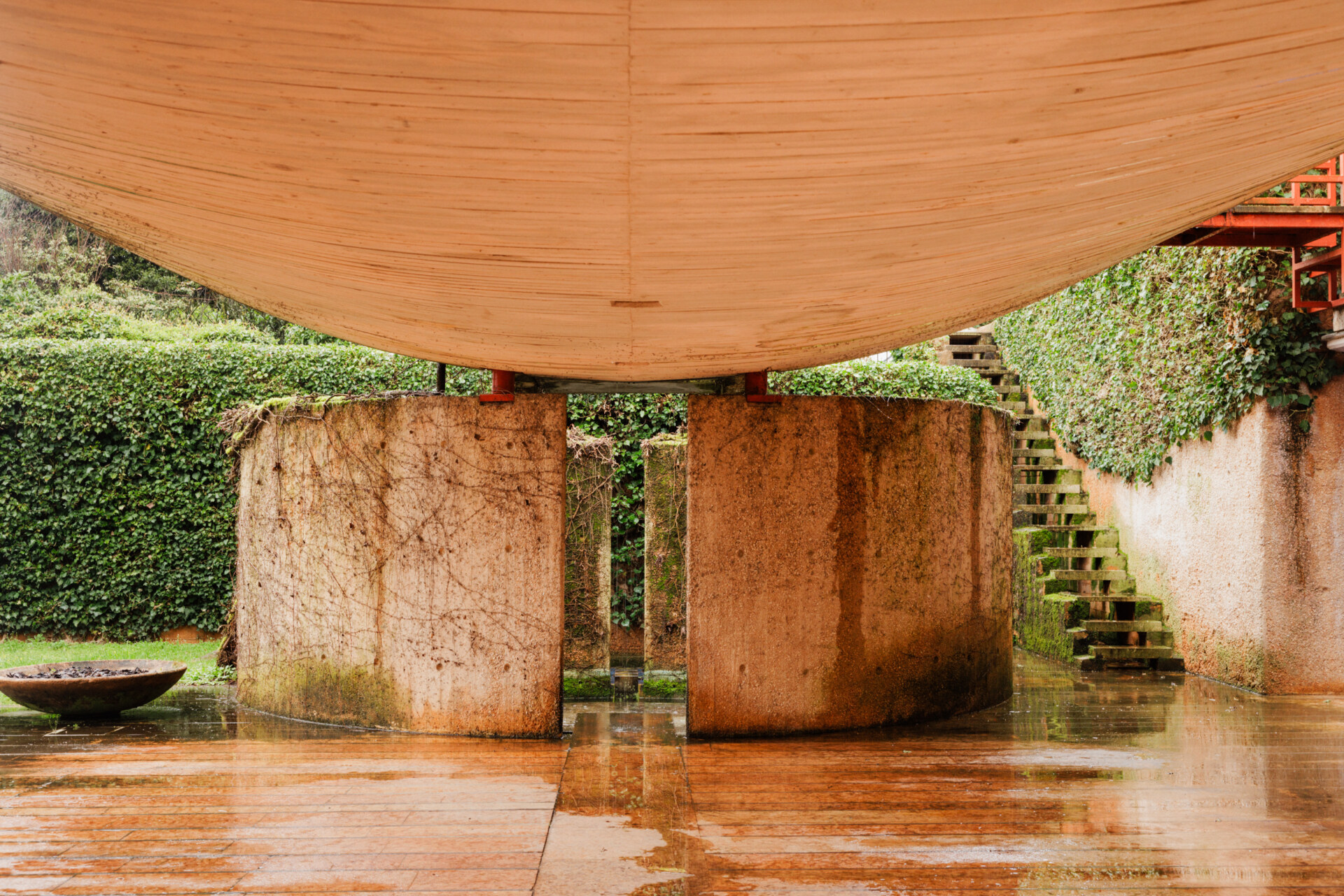
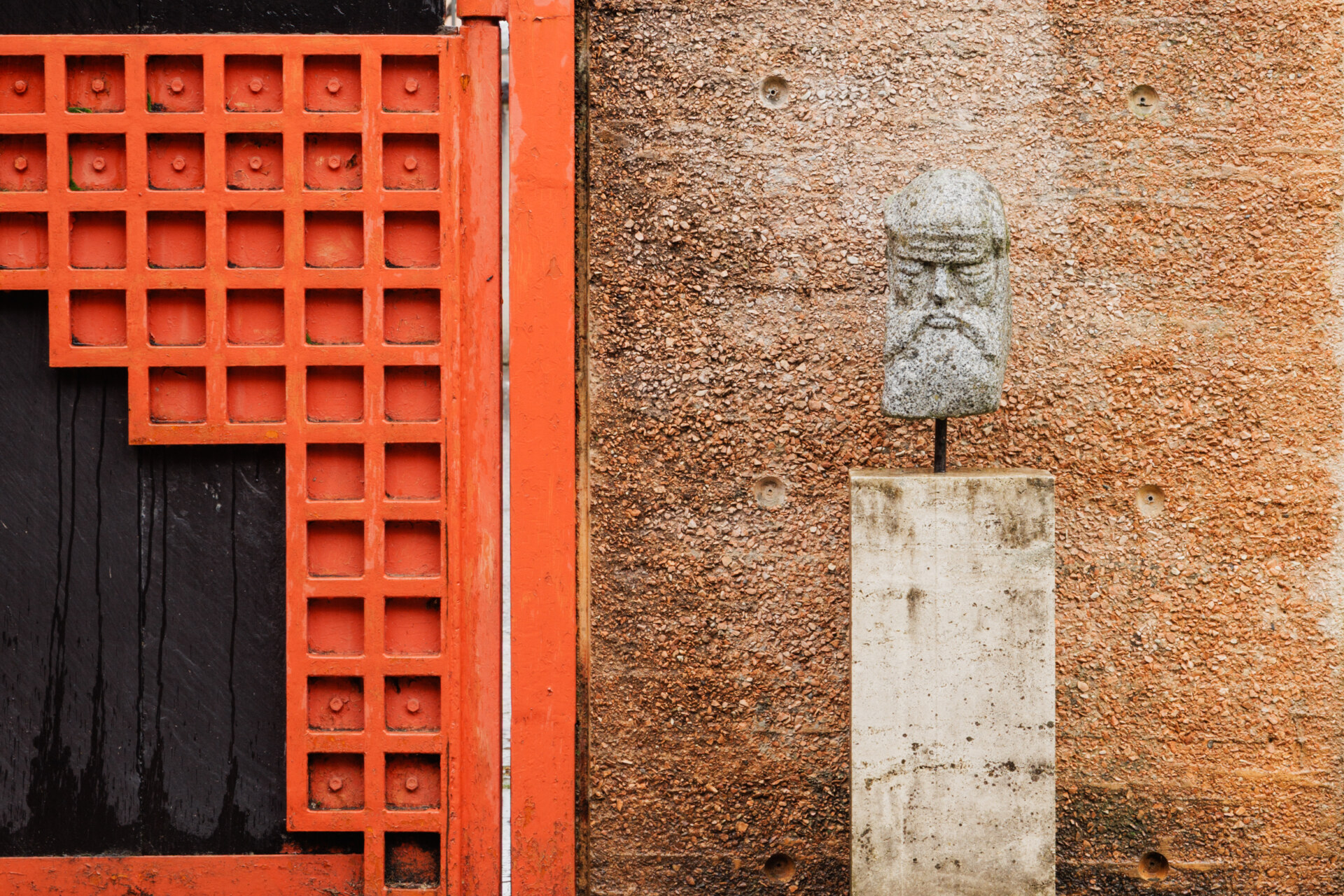
Claudio Caffetto, a well-regarded figure in Brescia’s artistic sphere during the ‘70s and ‘80s, commissioned architect and friend Fausto Bontempi (b.1935) to design the villa in 1972. Caffetto had a vision to create a kind of enclave in which he could create art, live with art, and welcome artists from his local circle. While it might have been filled with artworks by his artist-friends during his time, today, the villa showcases a selection of Caffetto’s own dynamic abstract paintings and figurative bronze and pewter sculptures (which line a glass-roof gallery on the Villa’s top floor). With a fusion of modernist and brutalist elements, Caffetto’s art explored an interplay between form, space, and material. His home is, in many ways, a living testament to his artistic ethos. Between the formal rigor of the artist’s work and the villa’s architectural peculiarities that reveal themselves at every turn, navigating Villa Cafetto for the first time requires sound peripheral vision, good balance (that “shape-shifting” trapeze staircase is rather thrilling), and a willingness to surrender to the residence’s definition of space and time that seems to exist beyond conventional parameters.
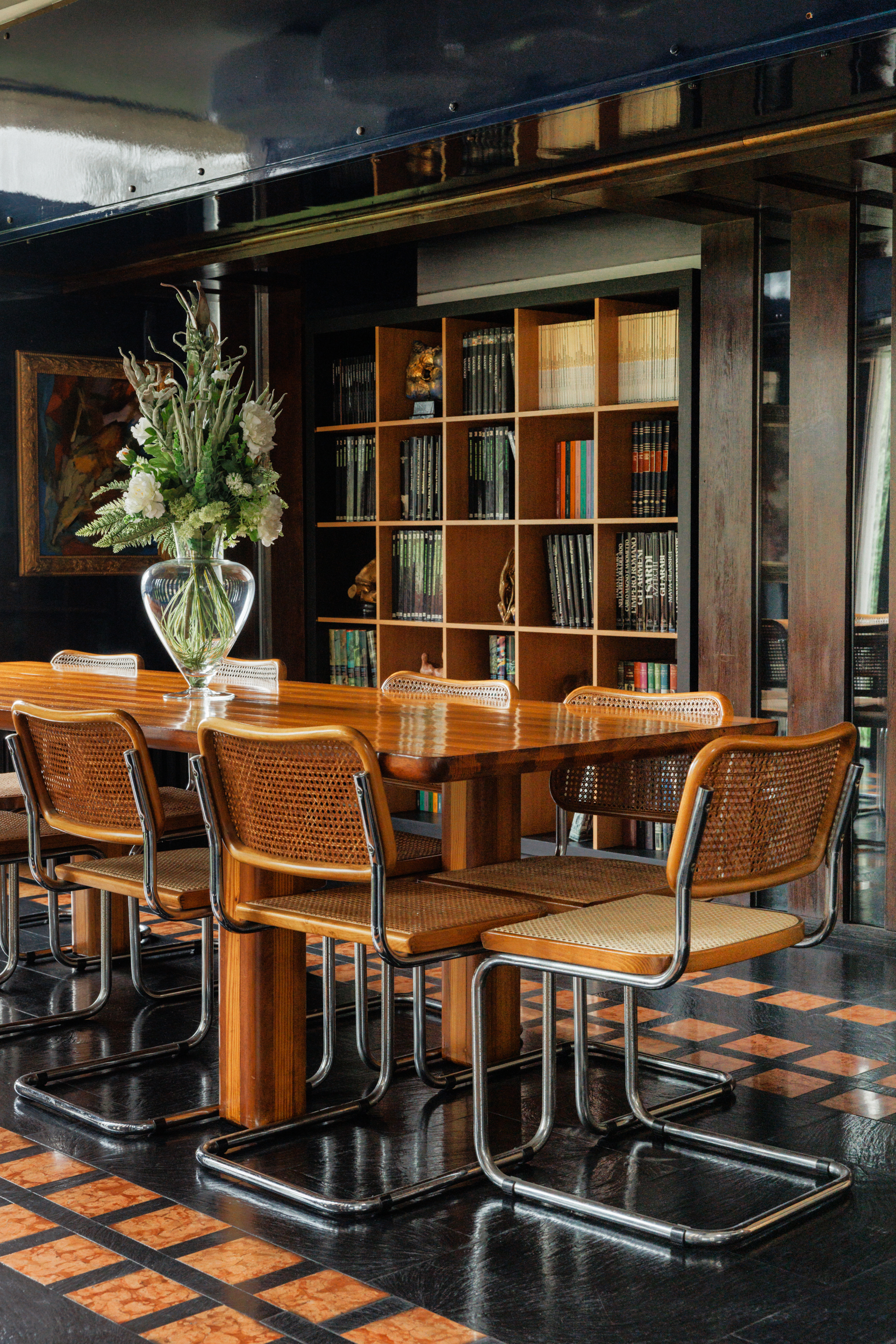
Where Caffetto’s daughters grew up eating breakfast every morning
One can just imagine the residents of Via Branca in 1974, watching with bewilderment as this imposing structure began to rise from the ground with its modular walls, imposing pillars, curved elevations, and geometric protrusions that defy categorization…“Cosa mai? È un aeroporto?” (“What on earth? Is it an airport?”). From some angles, Villa Caffetto is a triumph of brutalist precision, while from others, it looks like the pinnacle of post-modern experimentalism. Regardless, the structure is a testament to the depth of both Bontempi and his client Caffetto’s intellectual curiosity. Bontempi—whose influences spanned the Bauhaus, Le Corbusier, Frank Lloyd Wright, and the Venetian architect Carlo Scarpa (his university teacher)—reimagined the domestic space as a site where shape, form, and materiality are not merely part of life, they are the way of life.
Can you call Villa Caffetto a “house” then? Certamente. With its kitchen, dining room, living area, bathrooms, and bedrooms, it’s a perfectly functioning home. Caffetto’s daughters would know, they grew up eating their breakfast there every morning. Although, as Metilde mentions, its interior spatial configurations prove tricky when it comes to some conventional domestic efforts, like hosting large parties (…it’s probably not advisable to explore Villa Caffetto with a Negroni in hand anyway). There is no doubt that domestic practicality took a back seat in Bontempi’s architectural scheme, which instead favored artistic expression, dramatic formal experimentation, and what seems to be near-obsessive attention to detail.
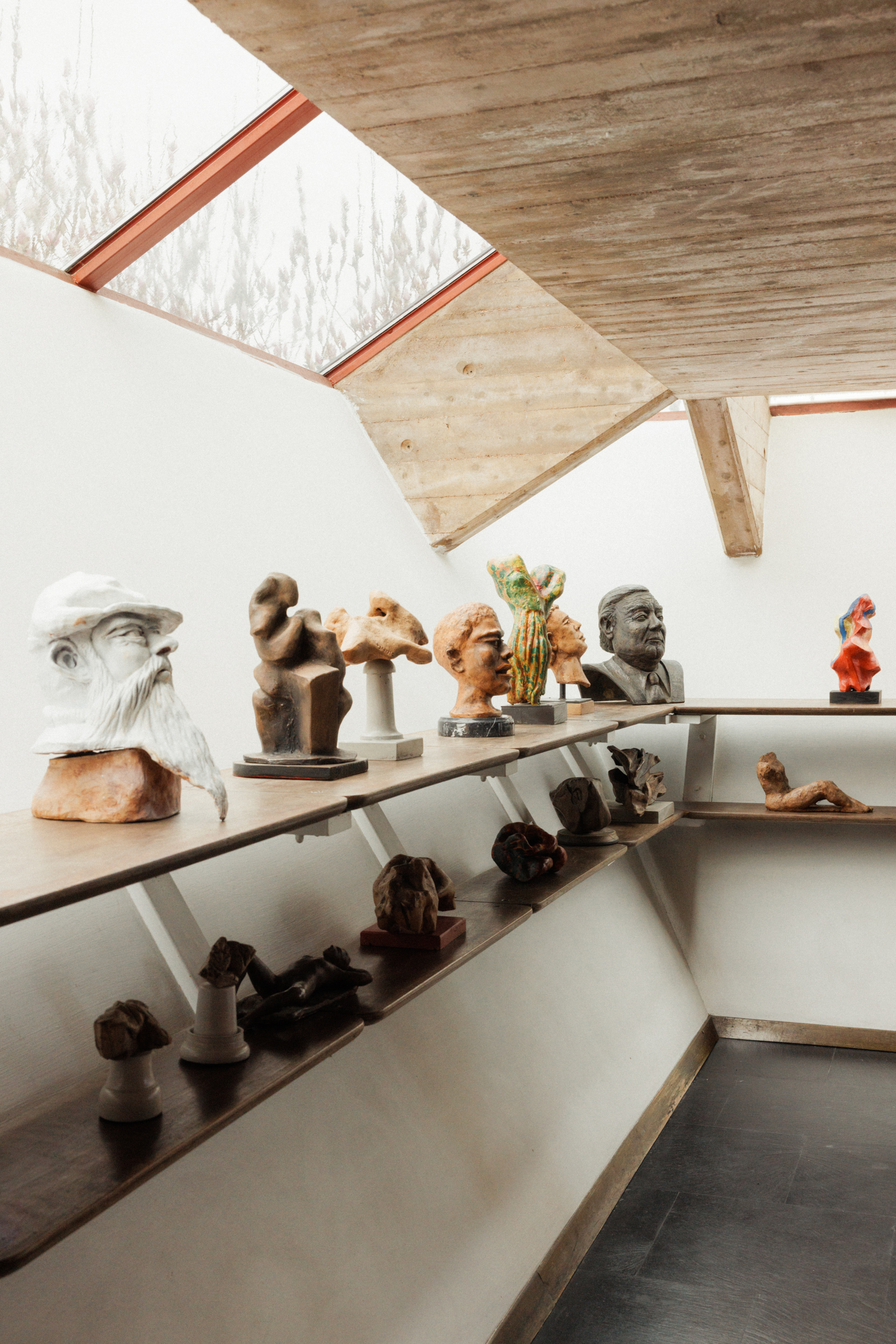
Top-floor gallery with Caffetto’s works
“I have always had a love for the concept of the house-museum, especially those in Italy, but I think Villa Caffetto is really a museum-house. It was designed and built with the intention of displaying art, which adds to its intrigue,” says Stefano Soso, Villa Caffetto’s new artistic director.
Stepping into the role last October, Soso is focused on writing the next chapter in the villa’s narrative; one that will place it “on the map” as a cultural reference point for the city of Brescia and well beyond.
“This is the first year we are running an artistic program at the villa, which includes a series of exhibitions, concerts, workshops, and special projects with leading cultural organizations. We are also running specialized workshops for kids based on the Munari method,” says Soso.
“We want to reach people from diverse backgrounds, and with diverse interests. We want to inspire people to not only visit Villa Caffetto once but to keep coming back.”
It doesn’t take long to feel a strange sense of familiarity at Villa Caffetto; almost like you lived there as a kid, or you’ve climbed its vanishing staircases in a dream. Discover it for yourself, and, who knows, you may even fall in love with a triangle.

The garden
